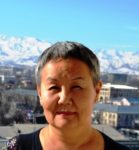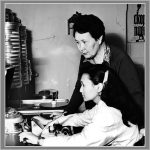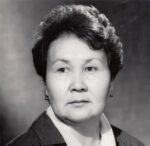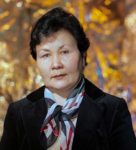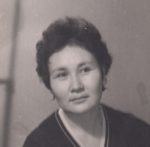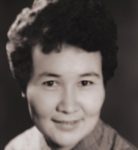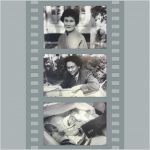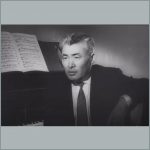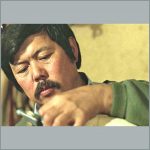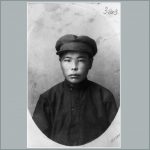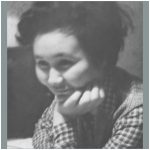The daughter’s story about Lila Turusbekova. Years of life 1933 – 2001. The creative years 1956 – 1992
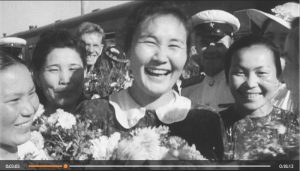 Amazing shots have been preserved in the State Archive of Film, Photo and Phono documents: 1951, the city of Frunze, the railway station, the Frunze-Moscow train, students go to study in Moscow, their relatives accompany them. Among the departing youth is Lilya Turusbekova, who entered the Faculty of Documentary Filmmakers at VGIK (All-Union State Institute of Cinematography). For a moment, a close-up highlights her face: she is smiling happily. This is my mom; I first saw these shots about 65 years after they were filmed…
Amazing shots have been preserved in the State Archive of Film, Photo and Phono documents: 1951, the city of Frunze, the railway station, the Frunze-Moscow train, students go to study in Moscow, their relatives accompany them. Among the departing youth is Lilya Turusbekova, who entered the Faculty of Documentary Filmmakers at VGIK (All-Union State Institute of Cinematography). For a moment, a close-up highlights her face: she is smiling happily. This is my mom; I first saw these shots about 65 years after they were filmed…
Everyone loves their mother and considers her the best person on earth. Here is my view on why the story about her may be interesting to people now that her life and work have already become part of history.
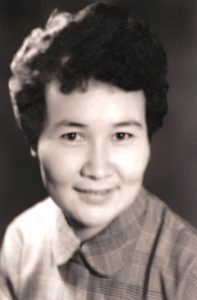
From the height of the past time, obe can see that in her shots there is a bright and ordinary, dramatic and creative, eventful life of the republic for more than a third of a century. Unique shots, forming a single whole, captured the panorama of the life of the country, the culture of the people, of which she herself was a part. People are the heroes of films directed by Lilya Turusbekova. All this is invaluable material for historians, writers and just people who want to know their country.
Being one of the first professional figures of cinema in the republic, Lilya Turusbekova did not work alone. She was surrounded by talented, outstanding personalities who glorified our art in this era. Lilya Turusbekova shot her documentaries when the cinema of Kyrgyzstan was on the rise, the professional skills of cinematographers were growing rapidly, and at the same time, identity was not lost, outstanding directors created wonderful films. All this time she was a permanent member of the artistic council of the film studio and actively participated in the critical analysis of the creative process.
I can confidently say that she was a person with impeccable taste and aesthetic flair. Lilya Turusbekova was one of those people who shaped the cultural environment of that time, and the bar was set very high.
Speaking about culture, I mean two aspects. On the one hand, this is her non-participation in intrigues, rumors, gossip, combined with goodwill, deep respect for colleagues, for everyone, including the least noticeable studio employees, interest in the creativity of beginners, in the development of professional skills. On the other hand, it is demanding of the aesthetic component of the works, the elimination of everything that can be called tasteless, kitsch, vulgarization of art – what, unfortunately, is now blooming in magnificent color. This cultural component of her life, I think, should not be ignored. This is no less significant than the priceless shots of the country’s life created by her.
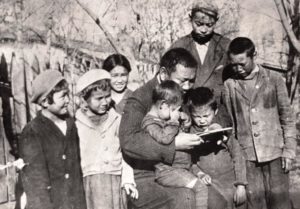
Lilya has an unusual name in Kyrgyzstan. That is what her dad called her. Jusup Turusbekov, an outstanding poet and playwright who died very young at the front of the Great Patriotic War. Jusup, as he is respectfully called by the people (it is customary to call respected and famous people by their first names among the Kyrgyz), admired the work of Vladimir Mayakovsky and gave his daughter a name in honor of the muse of the proletarian poet – Lilya Brick. Lilya Turusbekova was only 8 years old when her father went to the front, but the extraordinary personality of the poet, who treated his daughter very tenderly, influenced her entire subsequent life. Photos captured little Lilya with her parents, Lilya with her father walking along Dzerzhinsky Boulevard (now Erkindik Boulevard), Lilya with her father, brothers and other children listening to him reading a book to children in the yard.
Impressions of pre–war childhood: one of the most notable cultural events of Kyrgyzstan is the First Decade of Kyrgyz Art in Moscow in 1939. About 400 artists of the republic took part in this event. In the center of the event are two works by Jusup: the musical drama “Ajal Orduna” (“Not death, but life”), dedicated to the events of 1916, and the opera “Aichurok”, libretto of which Jusup wrote in a creative union with Joomart Bokonbayev and Kubanychbek Malikov. The father takes his daughter with him to Moscow, where 6-year-old Lilya communicates with the participants of the decade, creative workers, many of whom later became the glory and pride of the country.
So, probably, Lilya’s choice of profession is not accidental… Lilya has been independent since childhood: during the hungry war years, she brought home to her two younger brothers her ration of bread, which was given out at school. A recording of an interview for the radio has been preserved, where my mother, many years after the war, together with her mother, talk about the poet – father and husband. The story is this: before mobilization to the front, Jusup underwent military training, and just before leaving for the war he was released to visit home and say goodbye to his family. He comes, and three children are sitting on the threshold – alone, because his young wife, who worked at the publishing house at that time, like all residents of Frunze (Bishkek), after work went to the construction of the “construction of the century” – the Big Chui Canal. He came up to the children, stroked his daughter on the head, smiled and said: “You’ve become quite big, you’re looking after the family.” That was the last time she saw him, he had not returned from the front…
Her mom, Gulsun Moldakhmatova, the great-granddaughter of the famous Baitik, was refined, well-mannered, incredibly modest, even altruistic. For example, it happened more than once that, having three children, a husband who fought and died at the front, taking pity on the homeless, brought them home to live. One such “guest”, an orphan named Asiya, later became her daughter-in-law, the wife of Lilya’s younger brother. For many years, Dora Pavlovna lived with the Turusbekov family, evacuated from Russia during the war, it seems, from Leningrad, she did not create a new family, but became part of our family.

At the same time, as a little girl, Lilya was surrounded by wonderful people who made up the literary color of the first half of the 20th century of Kyrgyzstan. Many of them were friends and comrades of their father, and besides, Gulsun’s work in the publishing house assumed just such a circle of communication. In the photos of those years, Lilya, the daughter of the poet Jusup Turusbekov, is depicted together with Tamara Tokombayeva, the daughter of the poet Aaly Tokombayev, and with Damira Bayalinova, the daughter of the writer Kasymaaly Bayalinov. And school friends, and friends of student years, with whom close relationships have gone through all their lives, turned out to be significant personalities themselves, all accomplished people (for example, Damira Chokoeva, later for many years the former deputy minister of the meat and dairy industry). All of them note in their memoirs that Lilya stood out among her peers with a very serious attitude to business and a great love of reading.

The intelligence, inner culture, and breadth of views laid down in childhood, in the family, received a worthy cut at VGIK, where Lilya studied in the workshop of Lev Kuleshov, about whom the students later wrote in the preface to his book “The Art of Cinema”: “We make pictures, Kuleshov made cinematography.” He was both a film theorist and a practitioner, an innovator, for the first time applied editing techniques, which are called the “Kuleshov effect”. Kuleshov taught at VGIK for many years, was one of its leaders, headed the department of directing and wrote a lot — memoirs, textbooks, scripts. Together with his wife Alexandra Khokhlova, the daughter of Sergei Botkin and the granddaughter of Pavel Tretyakov, a silent film star who starred in his films, he has released several directing workshops. Among those who started with Kuleshov were outstanding directors V. Pudovkin, B. Barnett, M. Kalatozov.
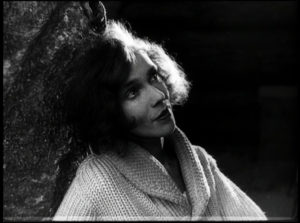
The intelligence, inner culture, and breadth of views laid down in childhood, in the family, received a worthy cut at VGIK, where Lilya studied in the workshop of Lev Kuleshov, about whom the students later wrote in the preface to his book “The Art of Cinema”: “We make pictures, Kuleshov made cinematography.” He was both a film theorist and a practitioner, an innovator, for the first time applied editing techniques, which are called the “Kuleshov effect”. Kuleshov taught at VGIK for many years, was one of its leaders, headed the department of directing and wrote a lot — memoirs, textbooks, scripts. Together with his wife Alexandra Khokhlova, the daughter of Sergei Botkin and the granddaughter of Pavel Tretyakov, a silent film star who starred in his films, he has released several directing workshops. Among those who started with Kuleshov were outstanding directors V. Pudovkin, B. Barnett, M. Kalatozov.
The first graduates of VGIK from Kyrgyzstan: documentary film director Lilya Turusbekova, cinematographers Marles Turatbekov and Kadyrjan Kadyraliev, all made history. Lilya made her thesis – the film “Silver Water” – at the Kirghizfilm film studio based on the script of I. Gerstein, then an experienced cinematographer, one of the first creative workers of the film studio that opened in 1942. Returning after graduating from VGIK, Lilya Turusbekova began working at the Kirghizfilm film studio, where she began regular filming of the Soviet Kyrgyzstan newsreel. The editor of the chronicle was Mar Baijiev, now a famous writer, playwright and Manas researcher, as well as a childhood friend: his father, the famous Manas researcher Tashym Baijiev, regularly visited the house of Jusup, they talked, discussed art. In those days, newsreels were shown before the start of feature films at every session in cinemas, they have now been replaced by advertising, and then it was the news of the country, giving the viewer a panorama of the most important events.
This was the fate of director Lilya Turusbekova: to capture the chronology, the life of the country in 65 issues of the film magazine “Soviet Kyrgyzstan” and in more than 30 films about ordinary and famous people, about their dreams, aspirations and work, about the cultural heritage created by their work, about the atmosphere of those years. All this is not a dispassionate fixation of the image in the frame. Every detail bears the stamp of respect for the heroes, interest in their spiritual world, revealed carefully and tactfully by the hand of a professional.
That is why from the first steps at the film studio, when Lilya was only 25 years old, everyone, even her peers, and some older people, called her “eje” (appeal to an older woman among the Kyrgyz), expressing respect for her education, serious attitude to business, professionalism. This appeal was not hindered by the grace and femininity of the young director, the naturalness of manners and benevolence of character. In an elusive way, Lilya managed to establish a thin border in creative communication with colleagues, which did not allow familiarity, while fully preserving the warmth and ease of communication.
From the very first steps at the film studio, she showed interest in people, in their creative work, the ability to discern the creative nature of the individual. The debutante was given a task to create a tape for the 40th anniversary of the Soviet power about the changes in the life of the Kyrgyz people. Lilya makes a film sketch “They were born on the Tien Shan” (1958). Instead of the traditional enumeration of the economic and cultural achievements of the republic, she builds the whole film on stories about the fate of specific people. The film, composed of several separate plots, preserves internal unity — compositional, editing, genre: in the biography of each hero, a feature is selected that becomes the development of the theme of the previous story and the threshold to the next story, and together they make up the story of the spiritual growth of the people of the republic. The film “They were born on the Tien Shan” by L. Turusbekova was among the first Kyrgyz documentaries that visited the screens of many countries of the world.
In 1961, director Lilya Turusbekova shot the film “The Great Epic”, the script of which was written by Mar Baijiev, cameraman Kadyrjan Kadyraliev, composer Tashtan Ermatov, artist Sagyn Ishenov, sound engineer Tolomush Okeev, assistant director Rakiya Sharshenova, director of the picture Imankul Abdykulov. What a team! All these people have become the pride of Kyrgyz cinema and a part of history. The film was shot after a great discussion that unfolded in the republic about the meaning of the epic Manas. In the spirit of some political sentiments of the time, there were voices against its preservation. The film contributed to the protection of the grandiose epic heritage of the national culture, which is its necessary and integral part.
Nurtai Borbiyev, Manas Musayev, Karel Abdykulov, Valery Vilensky, Bolot Shamshiev, Gennady Bazarov participated in the creation of the full-length documentary “Following the Spring”. The picture is an extensive story about the achievements of Kyrgyzstan, about science, about the beginning of the construction of the Naryn cascade, filmed for the first time. When handing over, the then legendary Minister of Culture Kulipa Konduchalova noted that the painting was worthy of participation in any festival. They say that for many masters of today, who glorified Kyrgyz cinema, this work served as an impetus in the subsequent choice of profession. People are the heroes of Lilya Turusbekova’s films. Now, from the height of the past time, it seems that these unique frames, forming a single whole, captured the panorama of the life of the country, the culture of the people, of which she herself was a part. Outstanding actors Muratbek Ryskulov (“Masters of Kyrgyz Art”) and Baken Kydykeeva (“Involvement”), singer, performer of folk songs with unique natural data, Myskal Omurkanova (“Myskal”), poet, playwright and translator Alykul Osmonov (“Alykul”), ethnographer Claudia Antipina with a very interesting fate, collector of the history of authentic traditional Kyrgyz costume, who managed to capture the passing art of folk craftswomen in time, the aesthetics of national clothes and embroidery of the Kyrgyz (“Fate”), manufacturer of saddles, Jylkychy Shershebaev, preserving the traditional craft (“Cheber”), became the heroes of documentary films. Now, when one talks about them, it is impossible to ignore this material.
All these people are our history, these shots are priceless. From an interview with Lilya Turusbekova, given after the filming of the film “Myskal”: “The themes of all these paintings echo in their essence – they are about folk talents. I am generally attracted to such people… I think we, cinematographers, should use every opportunity to shoot these unique people, otherwise tomorrow it will be too late.”
A special feature in this series is the full-length film “Koshoy-Tash” about the talented organizer Korchubek Aknazarov. This is a film about creation, about the sincere labor impulse of various people inhabiting the harsh land of the Kochkor valley, about the ability of the leader to mobilize the forces of the people who are building a better life themselves. “The film, praising labor, gives rise to pride in a person. Strict and emotional, he bribes and convinces” – this is how the famous film critic Kaarman Ashimov (1999, from 74) characterizes the film in his book “Kyrgyz Cinema”
The picture of the life of the country appears before us in all its diversity when we learn about a university student and her friends (“Look around, Cholpon”), about a young seamstress and a teacher (Your friends), about the life of a boy at a boarding school (“Me and my friends”) or we see through the eyes of a traveling grandfather and a boy different parts of the country (“The Birth of a Song” – the first director Yu.Gerstein).
We can safely say that all these films are about famous people and ordinary people, made with love and respect for the characters, and carry, as they would now say, “a sea of positivity.” There is no embellished reality, smoothed characters or official report in them. This is a document of the era, created by an optimist and a subtle observer who was able to discern something important, active and sincere in a person.
Of course, dramatic episodes of history also found a place in Lilya’s work. Already in independent Kyrgyzstan, the picture “Resurrected from the dust” was shot on the fresh traces of an event that shocked the whole country. A mass grave of 137 people who were shot during Stalin’s repressions, including the most famous political figures of the first years of Soviet power, was found. This tape is not about a sensation. In it, through the mouths of relatives, the acute feeling of losing loved ones is narrated, portraits of outstanding personalities, patriots of our country, their lively and warm images emerge from these sincere stories. These films are more about memory and history lessons, rather than the “chernukha”, which was so fond of at a crucial time, just when the film was being shot.
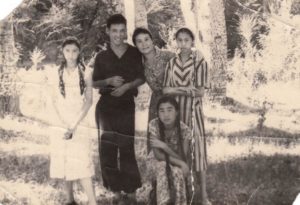
In this series, panoramic pictures about the country – “Soviet Kyrgyzstan”, “Your Day, Republic”, shot for anniversaries and already in their genre designed to become an ode to the achievements of the republic, have become solid material about major projects significant for the country, a testimony of time, and not a bravura and formal report.
Behind the scenes is the work at the film studio, which we, her children, have not seen, but have heard a lot from colleagues. She was a member of the billing commission, which charged all the “second link” at the studio every 6 months: assistant directors, cameramen, make-up artists, recording technicians, laboratory technicians, installation shop workers. Lilya Turusbekova has always objectively evaluated the studio staff, and she did it with great respect and attention to the work of each employee. Many years have passed, and still people have a sense of gratitude for strengthening faith in justice. Despite the fact that, admittedly, she was characterized by modesty, lack of desire to attract attention to herself, she was not afraid to be principled.
I must say that the profession of a director requires not only creative searches, but also the ability to mobilize a film crew from people of different temperament and disposition, constant traveling, overcoming everyday inconveniences, readiness to climb a horse to a high-altitude jailoo or climb a dam construction, and then look good… At the same time, documentarians are not in the public eye, people usually recognize in the face of those who are engaged in feature films, and not in the chronicle. At the same time, I must say, Lilya chose her profession consciously, “for love”, and this work never obscured her family, beloved husband, children, friends and relatives. All this existed in harmony in her life and therefore was very naturally perceived by us as a given. Only now, as time has passed, do we realize how valuable the atmosphere that she created around herself is.
Lily Turusbekova’s filmography
DOCUMENTARY. “ПЕРВАЯ ЛАСТОЧКА” (“THE FIRST SWALLOW”) About Lilya Turusbekova
“ВОСКРЕСШИЕ ИЗ ПРАХА” – RISING FROM THE ASHES. 1992. About the victims of 1937
Telegram-channel in Kyrgyz & Russian:
Санжарбек Данияровдун коомдук фонду
Фонд Санжарбека Даниярова
Subscribe if interested




